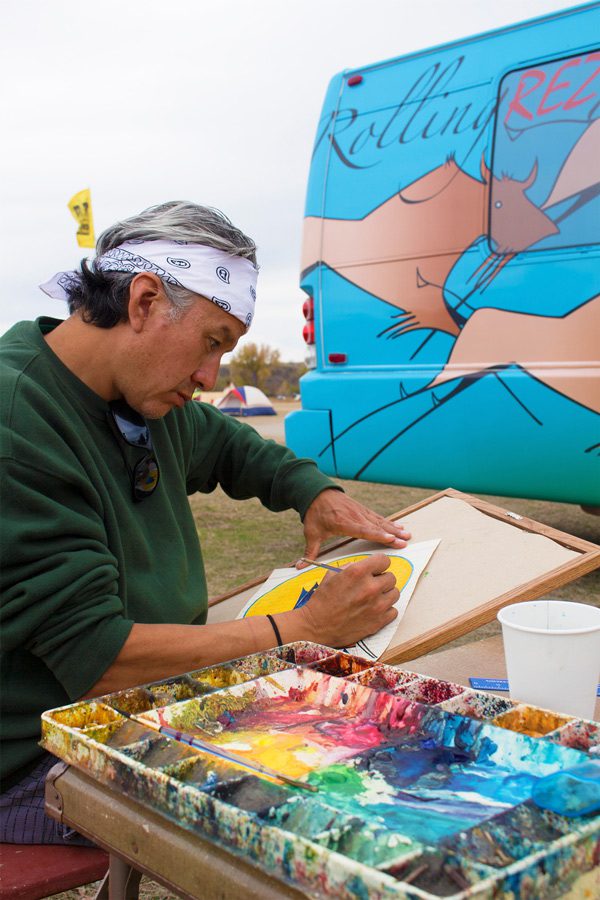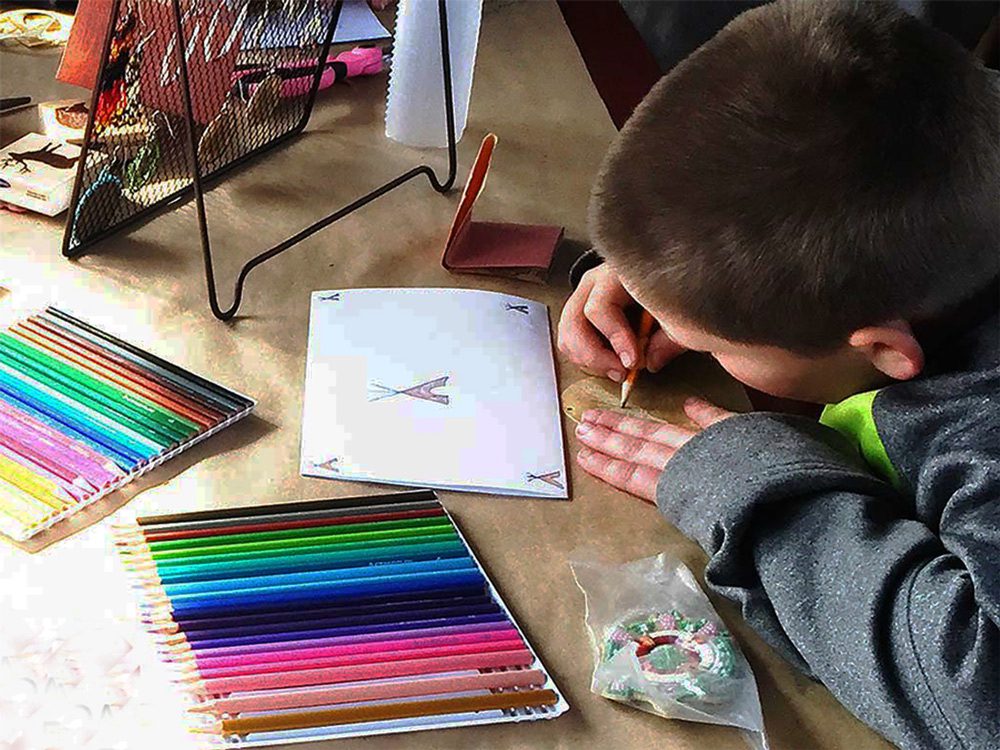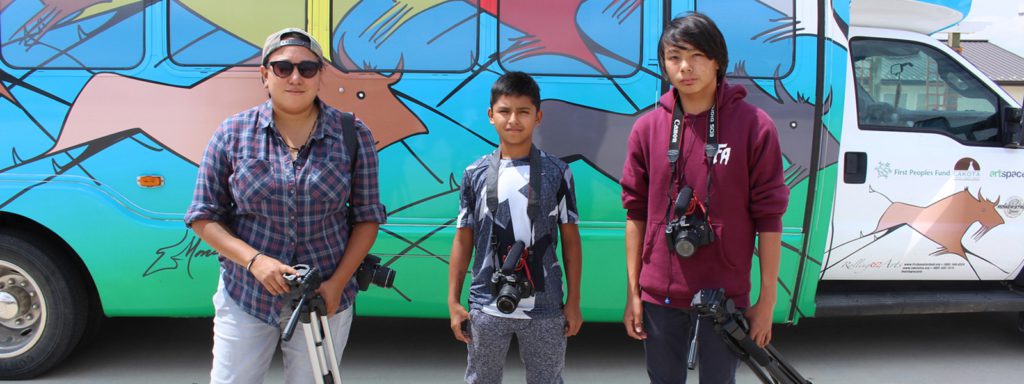IS members represent nonprofits, foundations, and corporations engaged in every kind of charitable endeavor, with missions that reflect the nearly infinite ways of working for the common good.
New member First Peoples Fund, located in Rapid City, South Dakota, honors and supports the Collective Spirit® of First Peoples artists and culture bearers. They work to build the field of Native arts and culture nationally.
We talked with Lori Pourier, (Oglala Lakota), President and CEO of First Peoples Fund, about their efforts to support and give voice to creative Indigenous artists, and how art and culture supports positive change in Native communities.

IS: Tell us a little bit about your career path and how you arrived at your present position.
LP: I grew up on the Pine Ridge Reservation (located in the U.S. state of South Dakota). My mom and dad worked with the tribe. I relocated with my mom and then attended a school with non-native students. My mother went on to work for the Native American Rights Fund (NARF). She is now director of development for the Oglala Lakota College (an accredited tribal college in South Dakota). Watching the social movements of the 1960s and 1970s, we felt empowered in our fight for self-determination.
My professional career began at the First Nations Development Institute when it was called the First Nations Financial Project. Much of my work was related to community development. There were no commercial banks [in Pine Ridge] and everything was supported by federal programs. Today Pine Ridge has a strong nonprofit and private sector, our own tribal college, Indian controlled schools, Lakota Federal Credit Union, etc.
We are a leader in data tracking, especially in the field of arts and culture. Our community development work is grounded in the “Indigenous Arts Ecology,” a model that partners Native community development financial institutions with artist entrepreneurs to strengthen the ecosystems in tribal communities.
IS: What are some of the challenges you face in your organization and how have you responded to them?
LP: Like most Native American-focused organizations, we must be patient when working with people who don’t typically work in rural areas or in Native communities. There are also complicated challenges with regards to our dual citizenship status, members of our tribal Nations and the U.S. I am first and foremost, a member of the Oglala Lakota Nation.
We are very fortunate to have some good, strong allies: we were formerly affiliated with the Tides Foundation. Our first investments were the W.K. Kellogg Foundation and the Ford Foundation. The Bush Foundation recently named us an exemplary organization, as well.
IS: Describe some of the programs or services your organization runs.
LP: In partnership with Lakota Funds, First Peoples Fund’s places emphasis on preparing artist entrepreneurs to obtain loans through our Native CDFI partners. We started out focusing our programs in the Great Plains and with the Dakota tribes in Minnesota. Now the scope is national. This was important to us because much of the support for Native artists in the past had been focused in the Southwest.
We cultivate a strong informal network of artists and help them grow and sustain their businesses. Some of our additional programs include: a curriculum for community artists and youth poetry slams in schools. We will once again, host the Intercultural Leadership Institute (ILI) in Lakota Territory and in collaboration with the National Association of Arts and Culture (NALAC), Alternative Roots, and the PA’I Foundation. Through our Artists in Business Leadership and Cultural Capital Fellowships, we help Native artists and culture bearers to develop their business skills and further their work in their communities.
We recognize exceptional Native artists with the Community Spirit Award, which has been given to nearly 100 people. Awardees are recognized for their work to sustain and share their creative, ancestral knowledge, cultural values and practices of their People. These leaders give selflessly, and with so much humility. They are a source of inspiration for me. They are a reminder of the importance of teaching young people about holding on to your culture and its teachings.
Our Rolling Rez Arts Bus is a traveling space for artists, but we have plans to use this program’s foundation for the Oglala Lakota Arts Space in Pine Ridge. In addition to providing a mobile space for art, the bus is also a credit union (in partnership with the Lakota Federal Credit Union) and a training space. We are very proud to have almost finished fundraising for the space, which will be a community center for Indigenous arts. Oglala Lakota Artspace is a collaboration between FPF, Lakota Funds and Artspace.
IS: How do you remain empowered in your role and continue to empower others?
LP: I worked with the Indigenous Women’s Network for several years. Through the Network, I participated at conferences and met young women who I then mentored. Truly I have learned from women from all around the world, including my international travels to the United Nations. The folks I’m surrounded by continue to lift me up in my work and when I think of all the ancestors, I know I’m not alone.

IS: Are there any unsung heroes you would like to recognize?
LP: Our board member, Bud Lane. Bud Lane was our 2009 Community Spirit Award honoree and a leader with the Northwest Native American Basket Weavers Association.
He regularly leads over 1,000 people in basket weaving lessons now – many of whom are kids. He is a member of a terminated tribe, and when teaching he instructs about larger ecology, including where they get materials.
IS: Thank you so much for your time today, Lori. Do you have any other final thoughts you’d like to leave us with?
LP: There are 573 legally recognized tribes in this country. It’s important to acknowledge first people and support each other. We need to respect each other and value both the unique experiences as well as the commonalities that we share.
Learn more about the First Peoples Fund at http://www.firstpeoplesfund.org/.
Visit our members page to learn more about our members.



